|
Aeroproducts Division of General Motors in World War Two
Vandalia, OH
1935-1960
Rest in Peace
This page updated
11-30-2017.
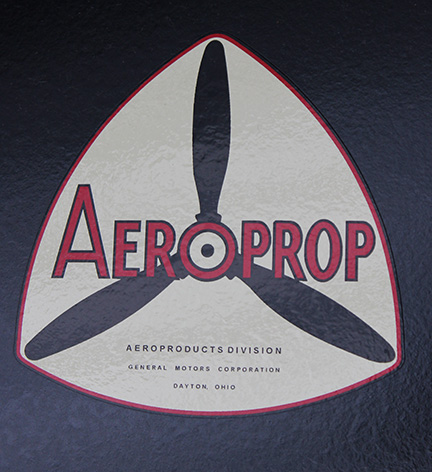
Author's Photo.
Aeroproducts is one of the more
obscure and now forgotten General Motors Divisions. In its day, it
was a prime contributor to the American World War Two effort as a
manufacturer of aircraft propellers. The last Aeroproducts
propeller was built in Indianapolis, IN in 1977 after Aeroproduct became part of the Allison Division of GM. The
particular design of the propeller allowed for an Oldsmobile-built
37mm cannon to fire through the hub on the Bell P-39 and P-63.

The Aeroproducts Division
of General Motors won the Army-Navy "E" Award on October
15, 1943.
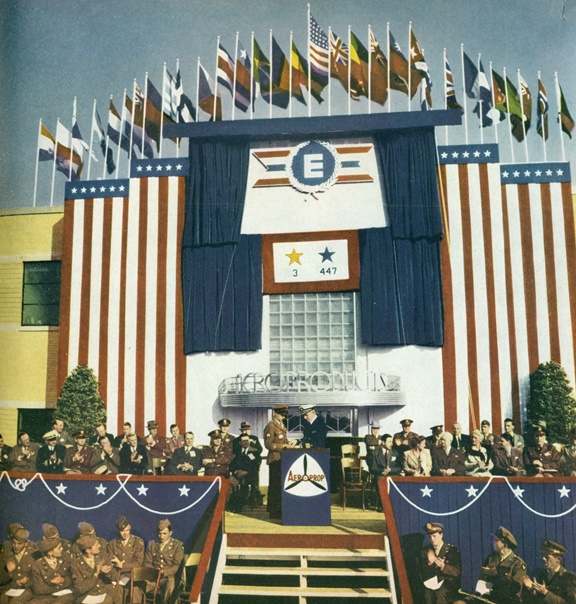
The award ceremonies took place on October 15, 1943 at
the front entrance to the Aeroproducts Plant in Vandalia, OH.
Aeroproducts
World War Two Production Statistics:
(20,773) Aircraft Propellers - For F8F, P-39, P-63, XP-75, P-75A, P-51K
and P-51H. During the war Aeroproducts had 2,500 employees.
|
Aeroproducts
WWII Propeller Applications - There may be others due to the
deficit of applications as shown below. |
|
Aircraft |
Propeller Designation |
Number of Blades |
Diameter in Feet |
Dates |
Number of Aircraft |
Comments |
| Bell
P-39F |
A632S |
3 |
10.3 |
1941 |
231 |
|
| Bell
P-39K-1 |
A632S |
3 |
10.3 |
First
Delivery in July of 1942 |
210 |
|
| Bell
P-39K-5 |
A632S |
3 |
11.6 |
|
|
This
is included in the 210 number. |
| Bell
P-39Q-21 |
A632S |
4 |
? |
SOP
March 1943 |
109 |
109
P-39Qs had the four bladed props and were sent to Russia.
I |
| Bell
P-63A |
A642S-D1, D3, E1, E2 |
4 |
11.0 |
First
flight 12-7-1942 |
3,303 |
|
|
Fisher XP-75 and P-75 |
AD7562-X5 |
6 |
12.6 |
First
flight 11-17-1943 |
14 |
|
|
Republic P-47B |
AD6462-X1 |
6 |
|
1943 |
1 |
AD
designated dual rotation in Aeroproducts nomenclature. In
1943 there was only one test flight of a P-47B with the
Aeroproducts AD6462-X1 counter rotating propeller. The
propeller was found to de-stabilize the aircraft, and it was the
only test flight ever made with the Thunderbolt and Aeroproducts
propeller. Added 5-5-2015. |
| Bell
XP-77 |
A5215 |
2 |
9.5 |
First
Flight 4-1-1944 |
2 |
|
|
Vought XF4U-4 |
AD7562-X5 |
6 |
12.6 |
6-1944 to 8-1944 |
1 |
Testing indicated the AD7562-X5 resulted in the XF4U-4 being ten
MPH slower, the climb rate reduced by 300 FPM while weighing 203
lbs more than than a standard four blade propeller. Added
5-5-2015.
|
|
Republic XP-72 |
AD7562-14 |
6 |
|
First
Flight 6-26-1944 |
1 |
The
end of the war cancelled the 100 place production run.
Added 11-30-2017. |
|
Grumman F8F-1 |
A642-G1 |
4 |
12.6 |
First
Flight 8-31-1944 |
658 |
|
|
Grumman F8F-2 |
A642 |
4 |
12.6 |
|
100 |
|
| North
American P-51F/G |
|
3 or
4 |
|
|
5 |
|
| North
American P-51K |
A542S |
4 |
11.0 |
|
1,500 |
|
| North
American P-51H |
A542-B2 |
4 |
11.0 |
First
Flight 2-3-1945 |
555 |
|
| North
American P-82 |
A542 |
4 |
11.0 |
First
Flight 6-16-1945 |
272 |
Twin
Engine aircraft |
|
Boeing XF8B-1 |
AD7562-XB |
6 |
13.5 |
First
Flight 12-27-1944 |
3 |
|
|
Total |
|
|
|
|
6,965 |
There
is a deficit of known applications for 13,810 propellers. |
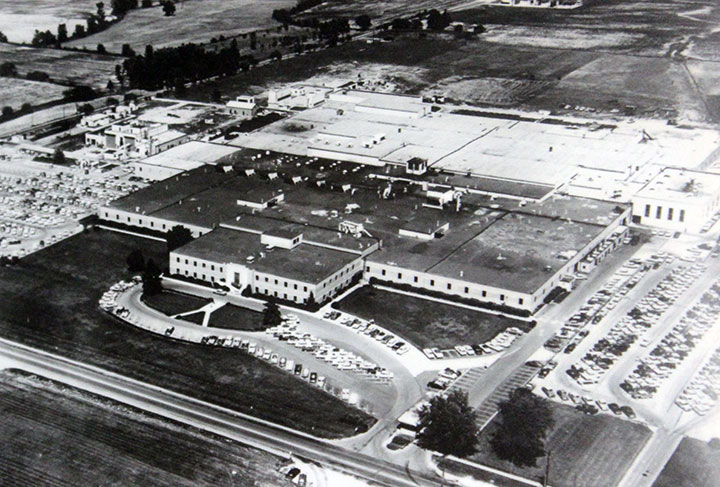
The Aeroproducts plant in
during World War Two. This Aeroproducts plant produced 3%
of the total propellers
made during World War Two. Photo added 2-27-2015.
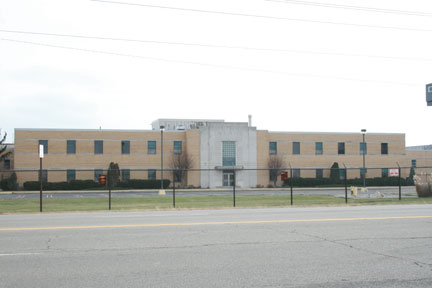
This is the Aeroproducts
administration building as it stood before being razed in 2008.
When the product line went to Allison Division in 1960, Inland Division
of GM then took over this building and the related manufacturing
facilities. This was located just across the street from the Dayton
International Airport. The "E" for Excellence Award ceremonies
took place at the main entrance in October 1943 as shown above. Author's
photo.
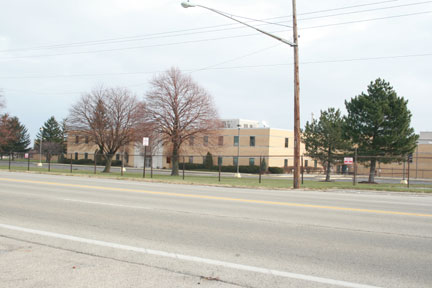
Author's photo.
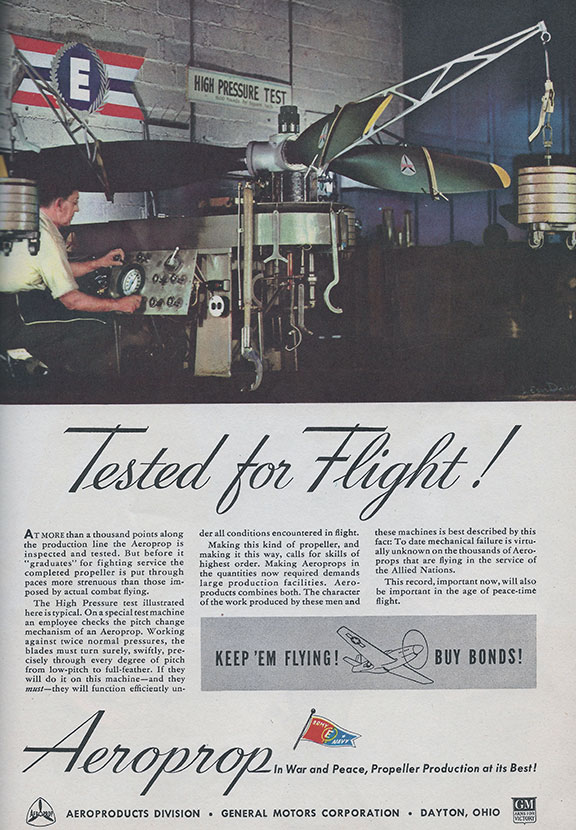
This ad is from 1944.
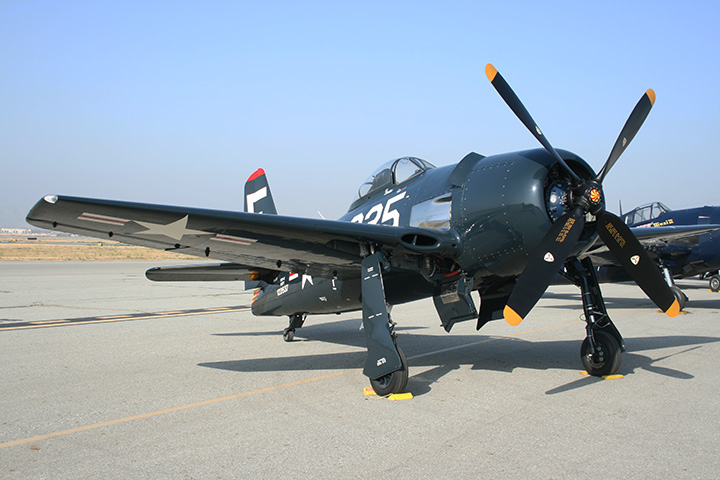
The Aeroprop emblems can be seen on this
Grumman F8F Bearcat. The diameter of the propeller is 12 feet and
seven inches. Author's photo from the 2009 Chino Airshow, Chino,
CA.
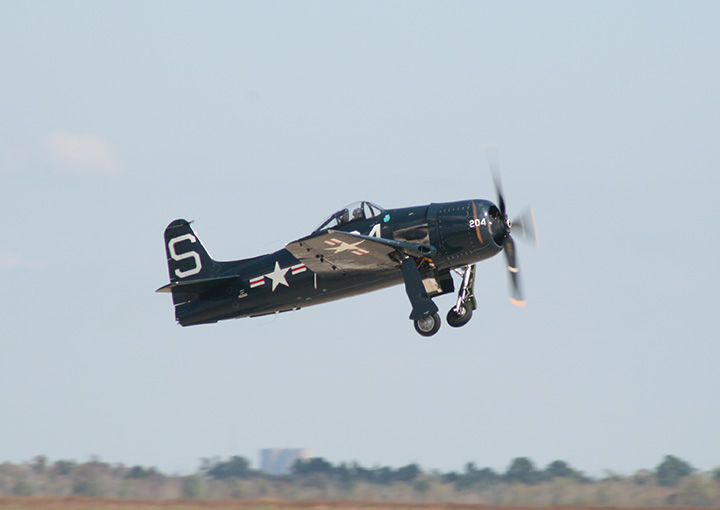
Here a Grumman F8F Bearcat climbs for
altitude at the 2013 Houston Airshow. The Aeroprop emblems can be
seen as blurs in this photo. Author's Photo.
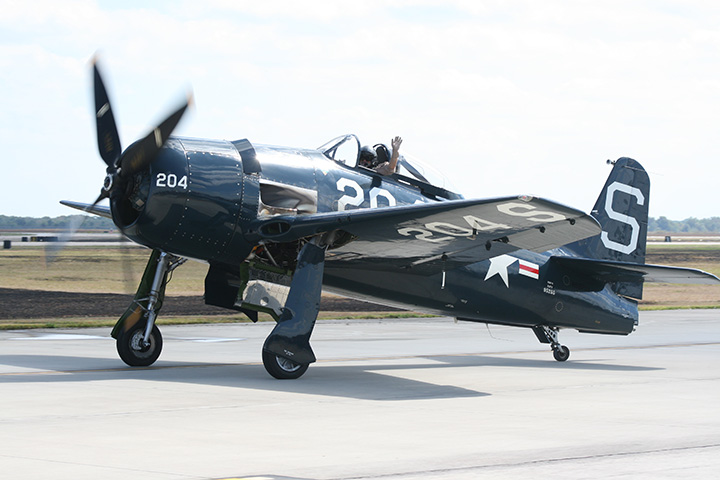
The Aeroprop emblems can again be seen as
blurs in this photo at the 2013 Houston Airshow. Author's Photo.
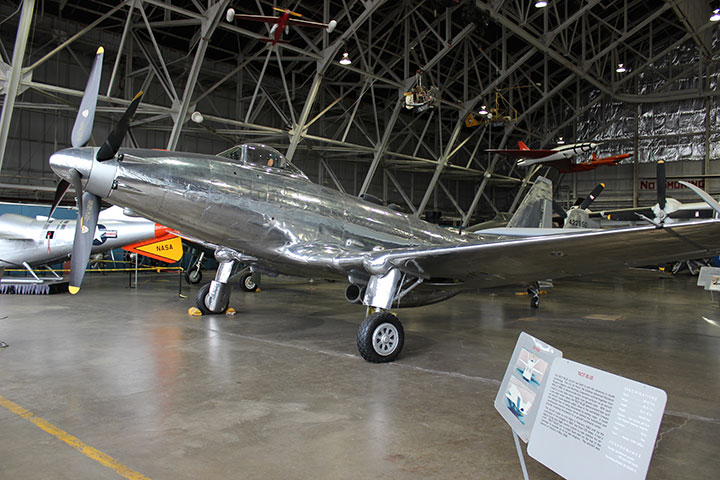
This Fisher Body XP-75 on
display at the National Museum of the United States Air Force has an
Aeroproducts counter rotating prop. Author's Photo.
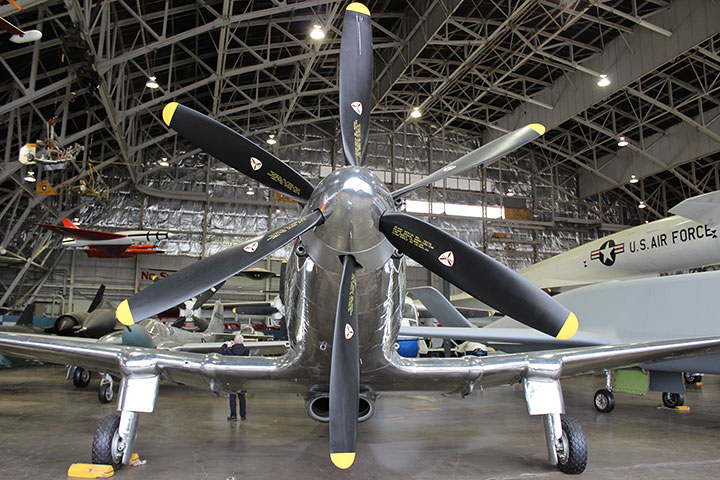
The first flight of the
Fisher XP-75 took place on 11-17-1943. Author's Photo.
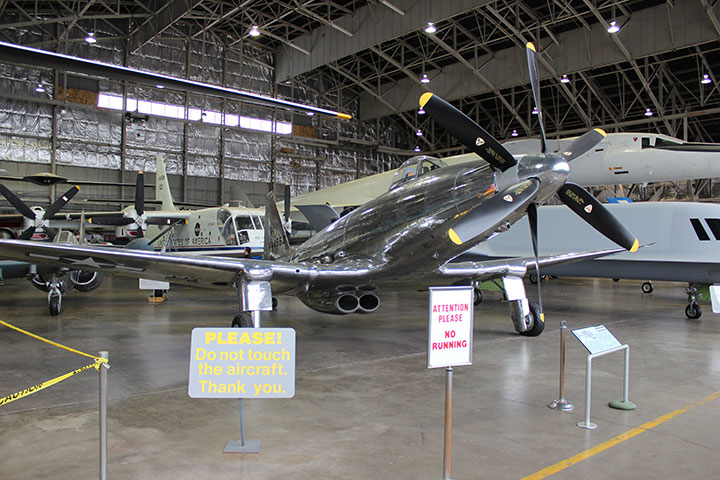
The Aeroproducts Counter Rotating Props were also used on these World
War Two experimental aircraft: Republic XP-72, Boeing XF8B-1and
the Curtiss XBCT-2. Author's Photo.
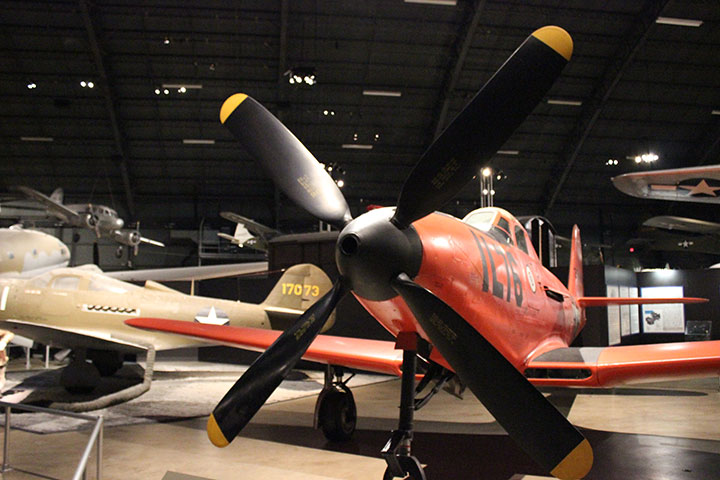
This photo shows the Aeroprop
four-bladed propeller on a Bell P-63E displayed at the National Museum of
the United States Air Force. Author's Photo.
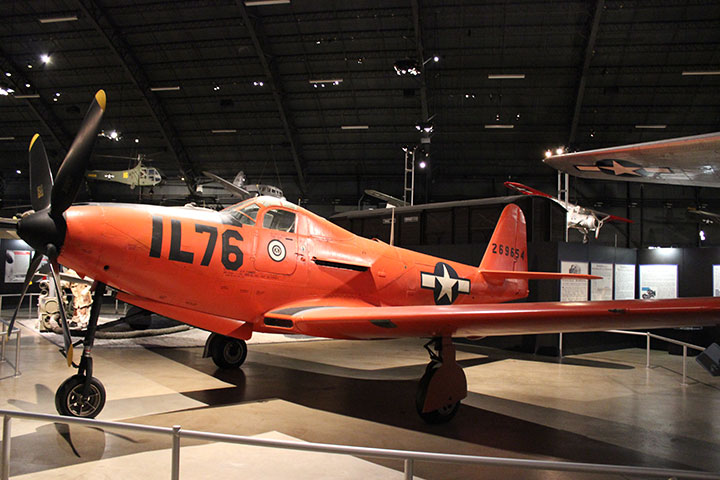
Author's Photo.
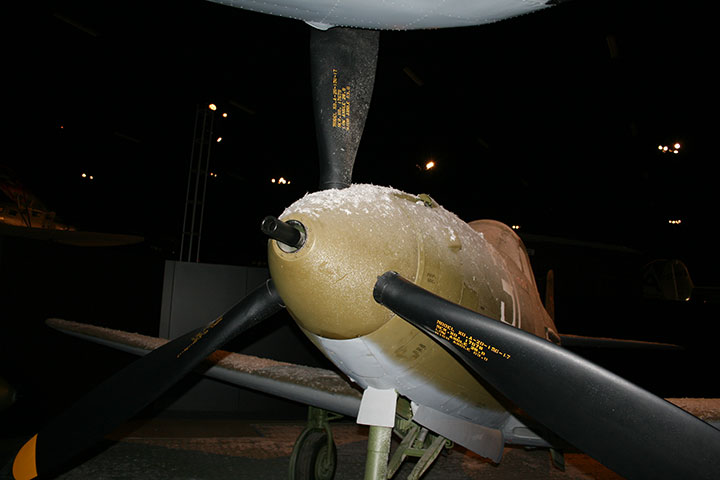
This is not an Aeroproducts
propeller on this Bell P-30Q. This photo does show
how it is possible to have the barrel of an Oldsmobile 37mm cannon
installed in either the Curtiss Electric or Aeroproducts propeller hub. Author's photo from
the National Museum of the United States Air Force.
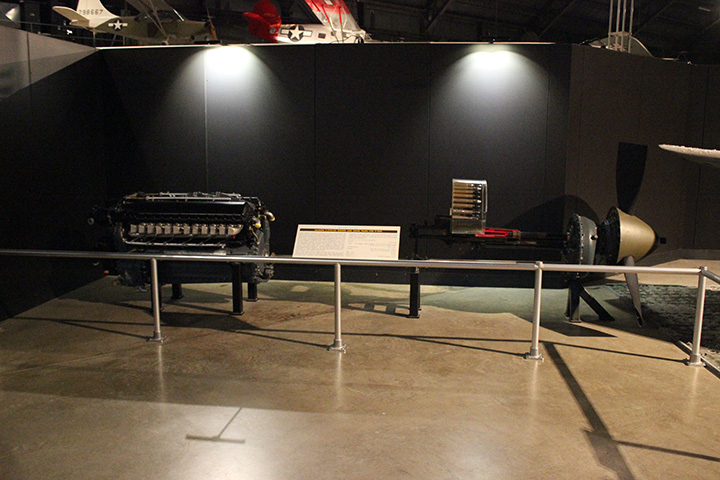
This photo shows the entire P-39 drive train with
General Motors Divisions' components. On the left is the Allison
V-1710 engine, then the Oldsmobile built 37mm cannon, the Cadillac gear
reduction unit, and then the Aeroproducts propeller. The engine was
behind the pilot and the driveshaft went between the pilot's legs.
This
allowed the cannon to fire out of the center hub of the prop.
Author's photo from the National
Museum of the United States Air Force.
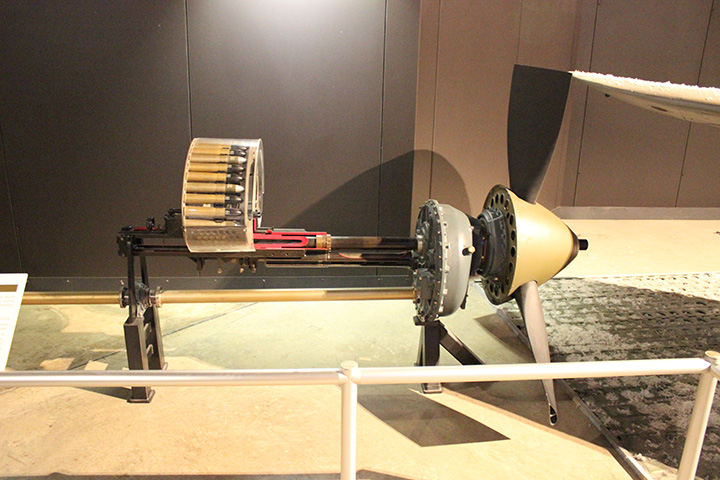
Author's Photo.
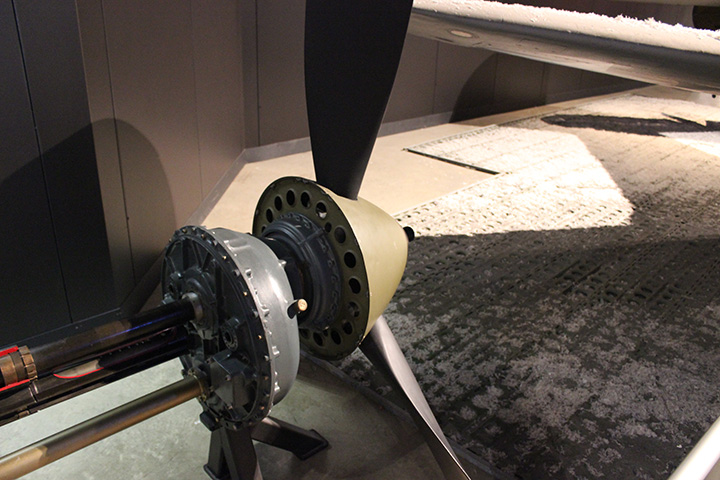
Author's Photo.
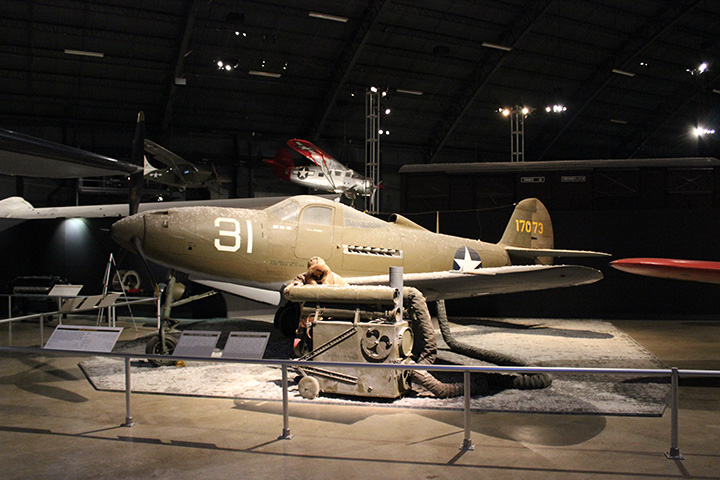
This P-39Q shows the aircraft type
that is similar to the 464 P-39 aircraft that the Aeroproducts prop went
into. Note that the engine exhaust
stacks are behind the pilot where the GM Allison V-1710 engine was
located. Author's Photo.
Blades for Victory - The Story of the
Aeroproducts Propeller & the Men & Women who build it
This booklet gives an excellent overview
of what and how the Aeroproducts propeller was made and those who made it
during the Second World War.




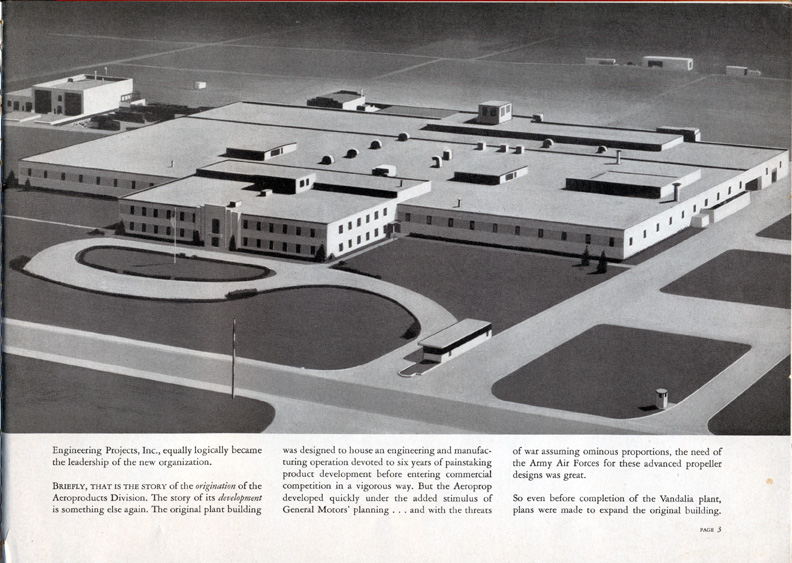

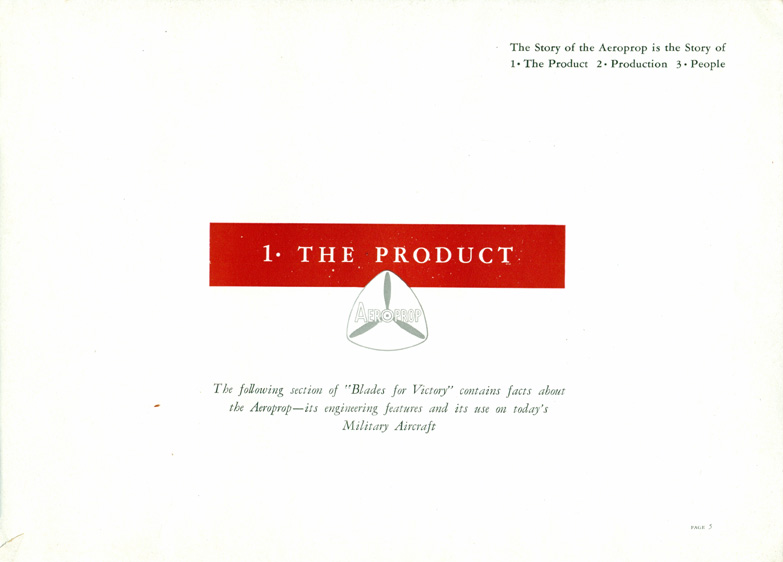
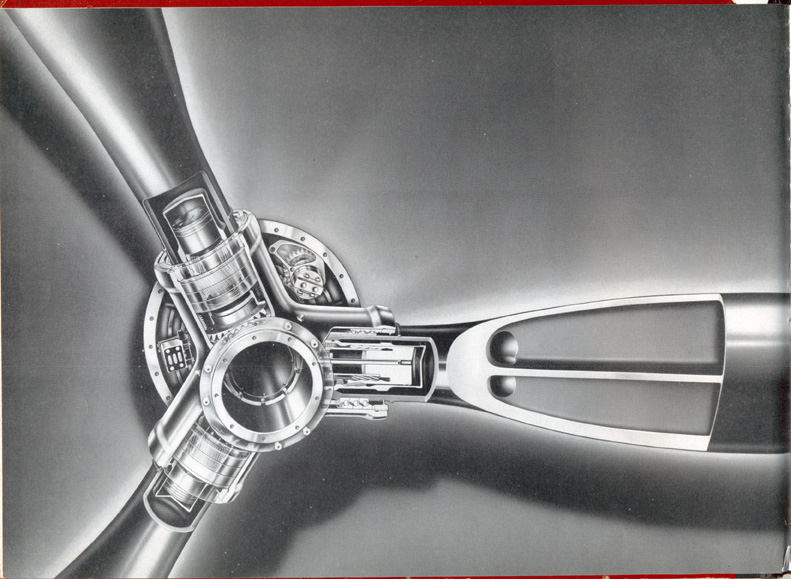
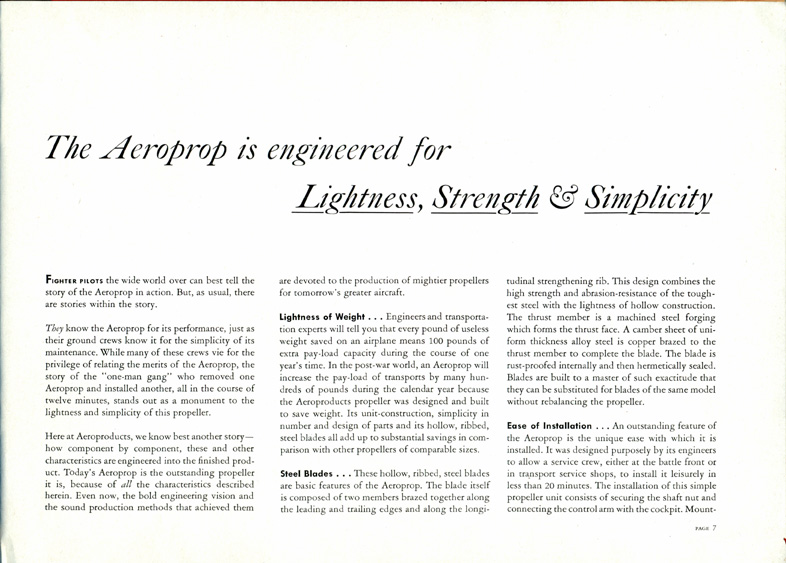
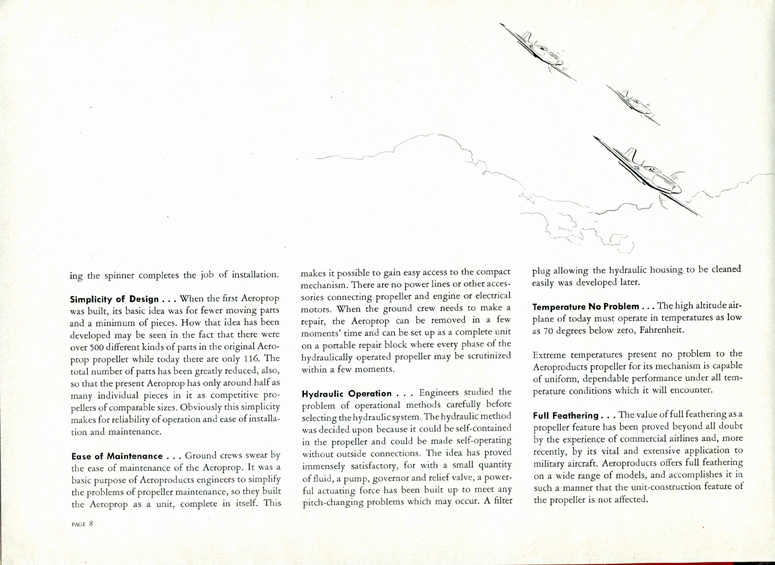
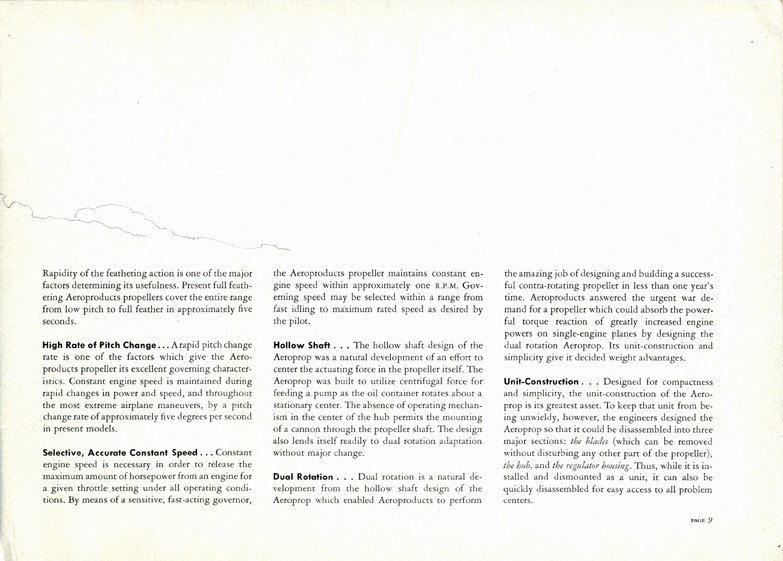
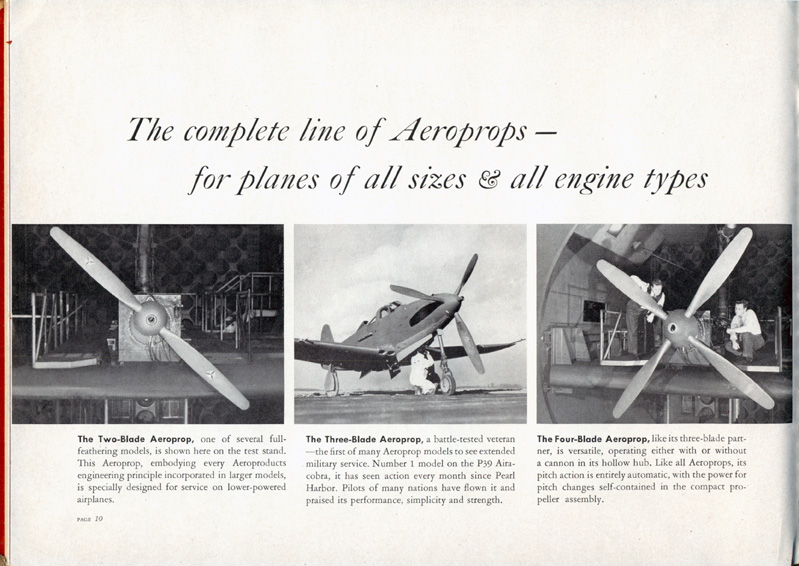
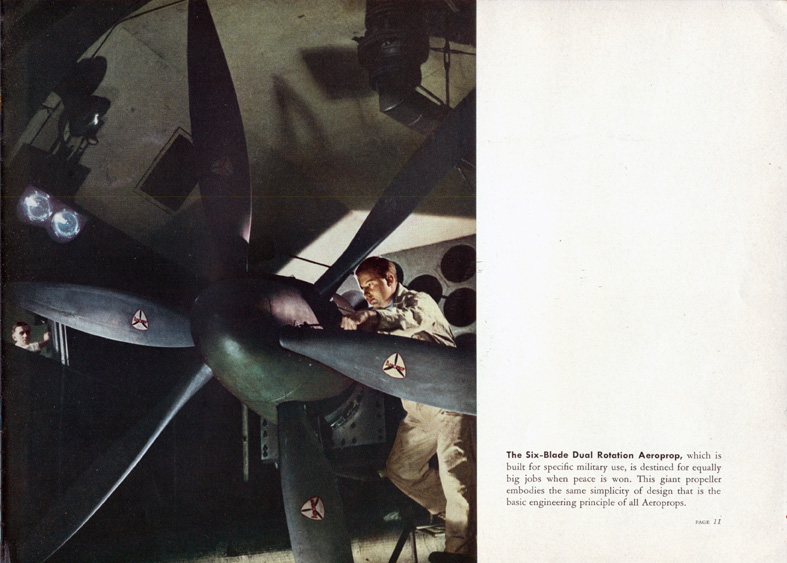
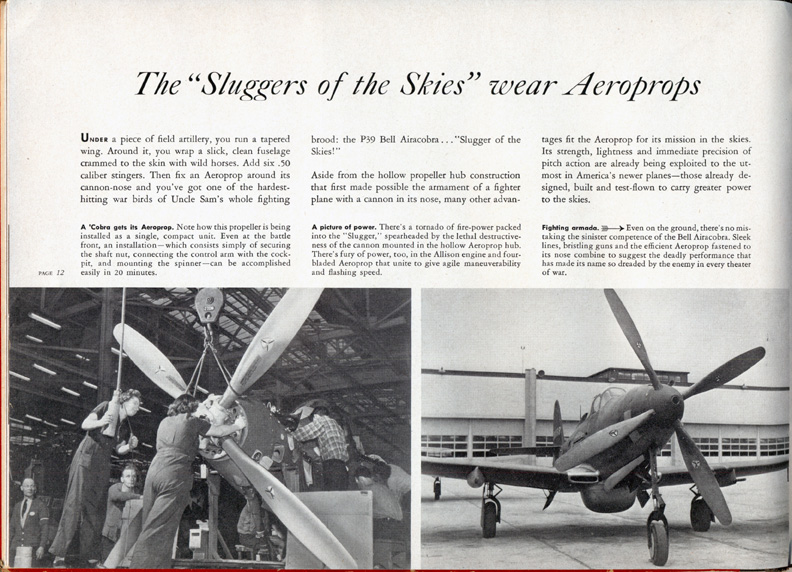
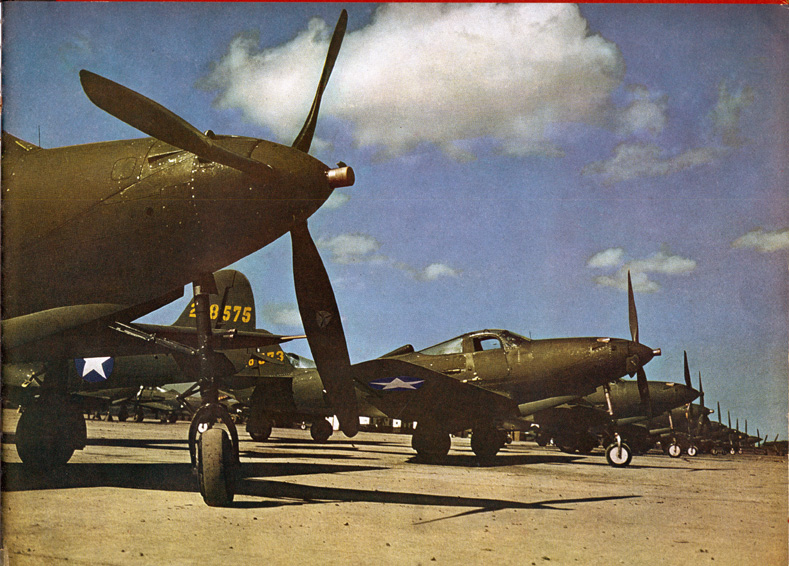
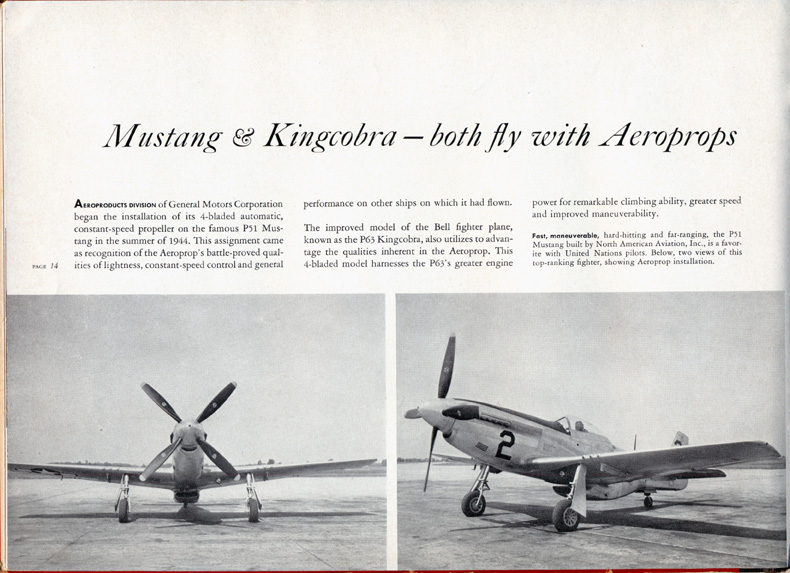
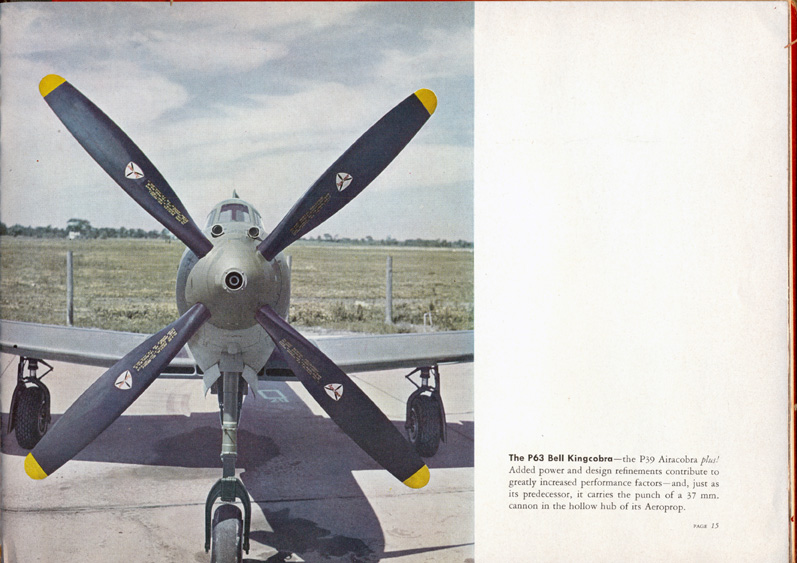
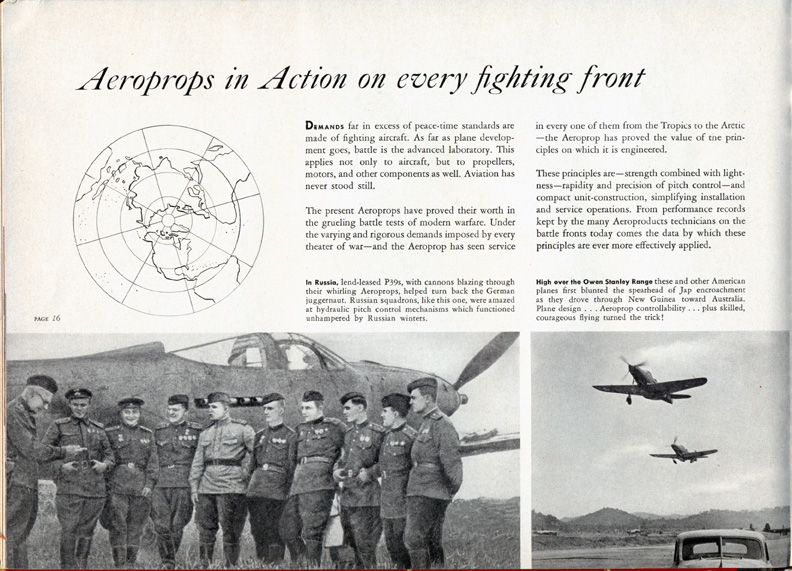
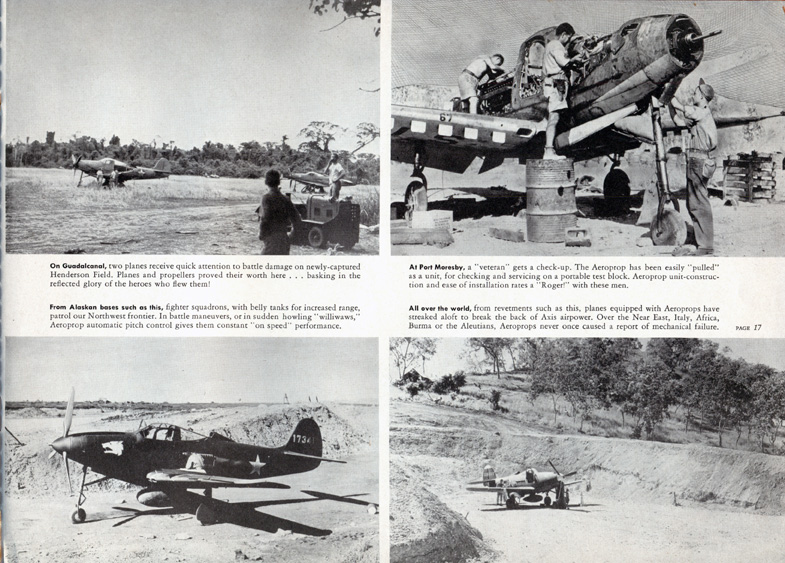
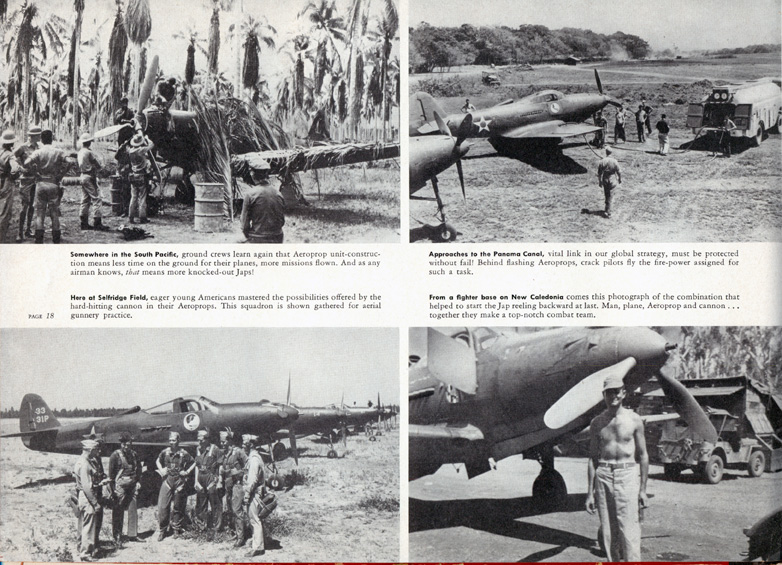
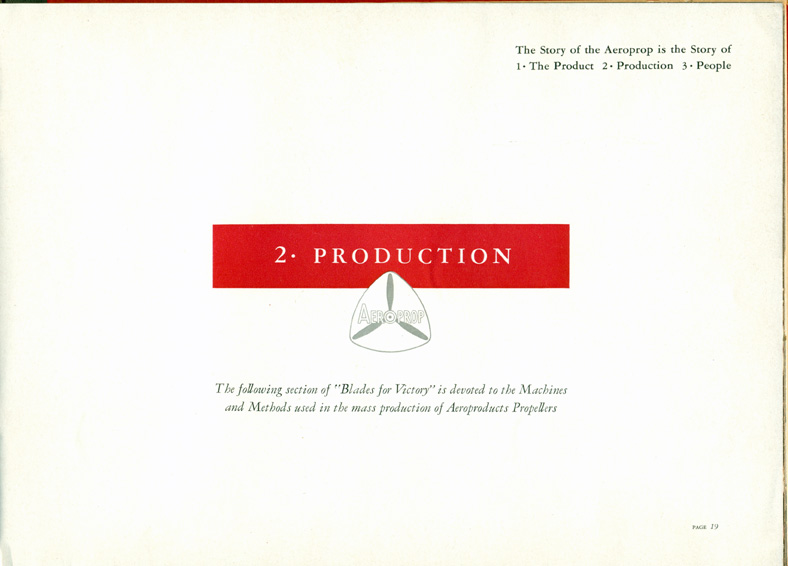
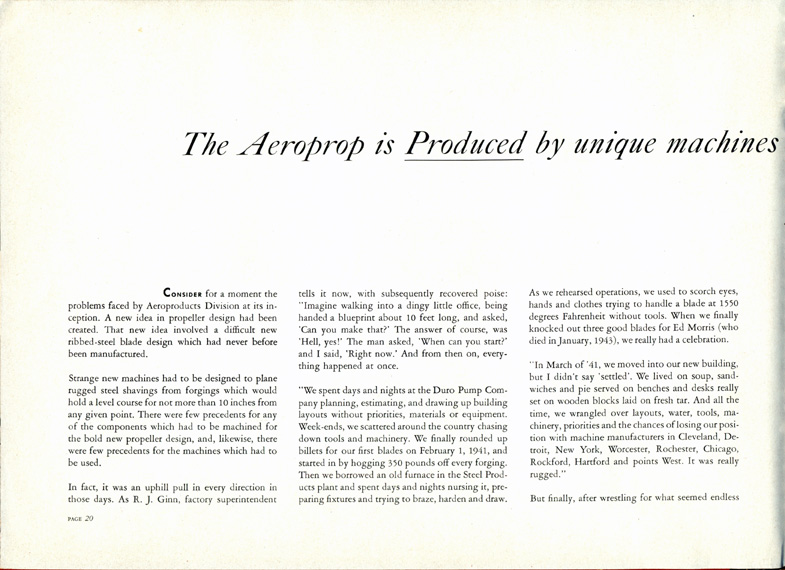
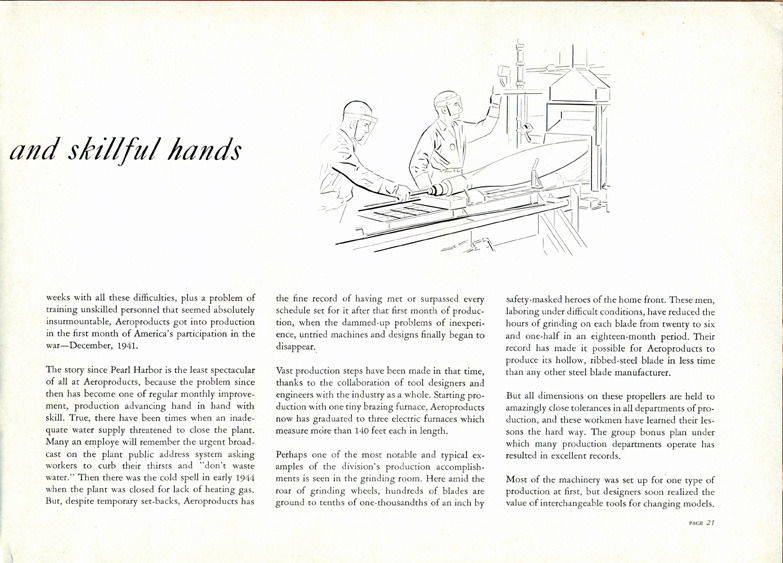
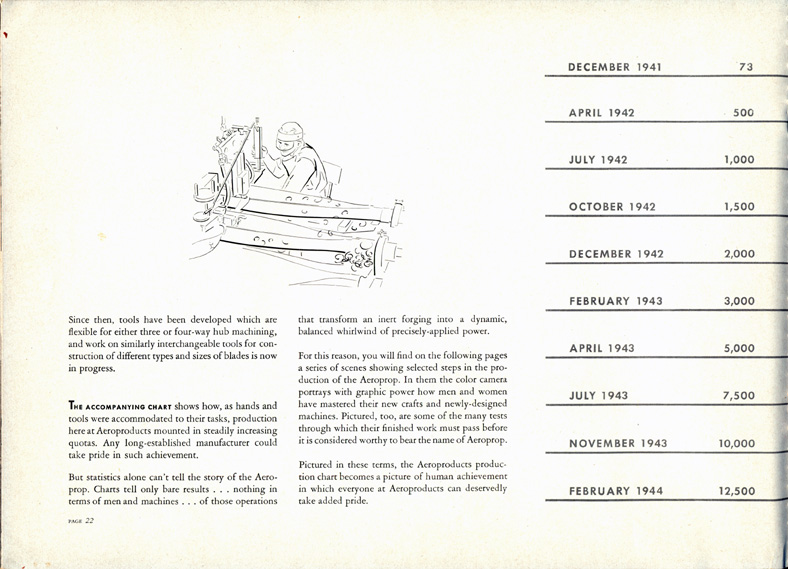
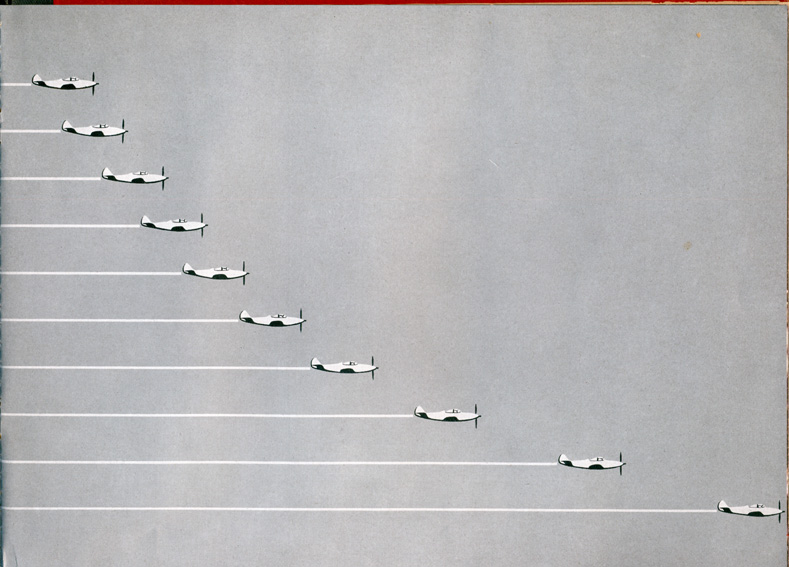
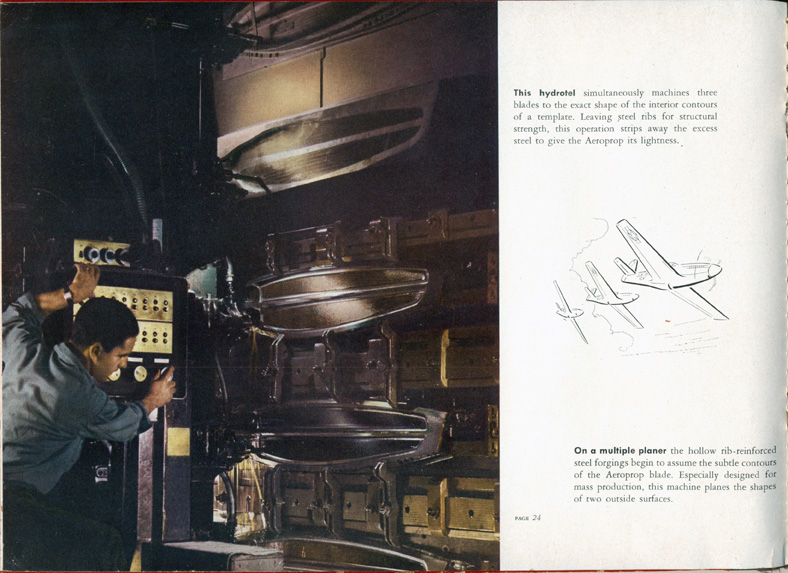
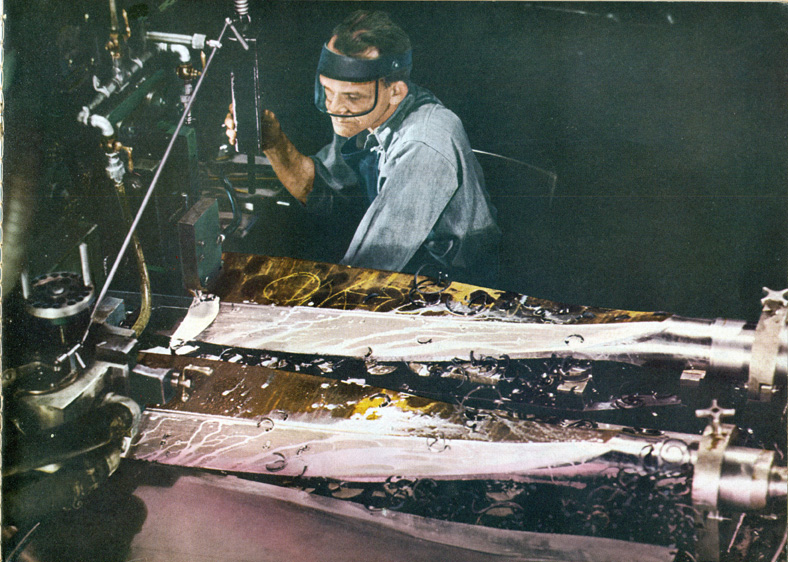

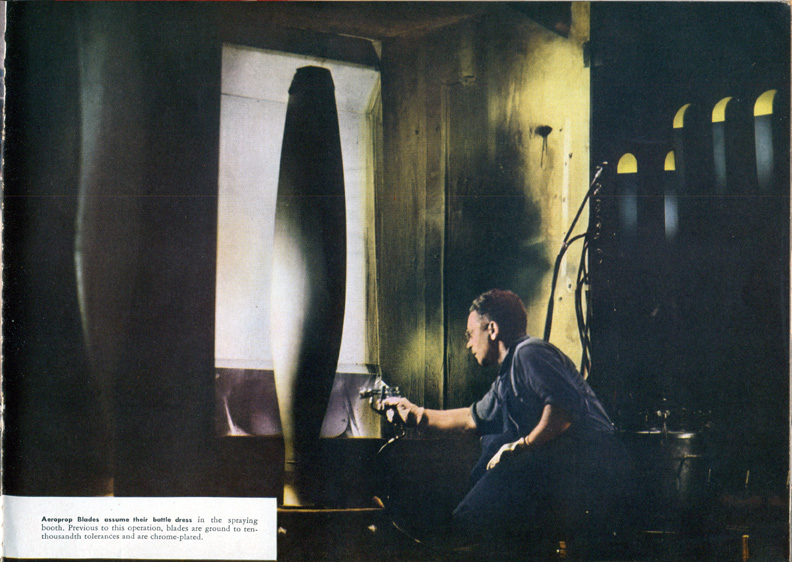
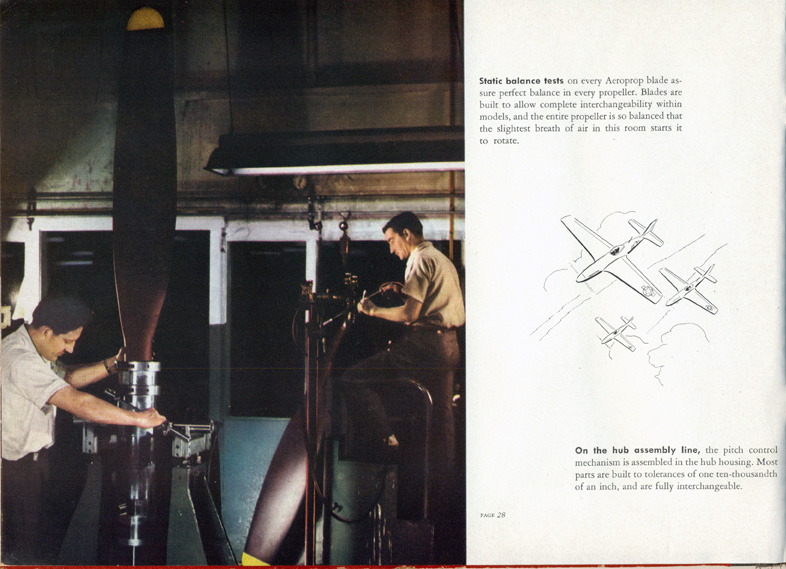
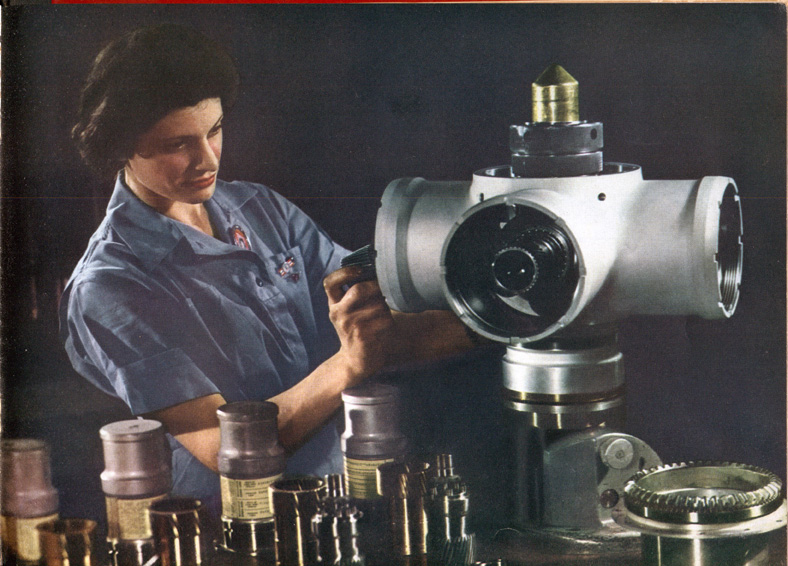
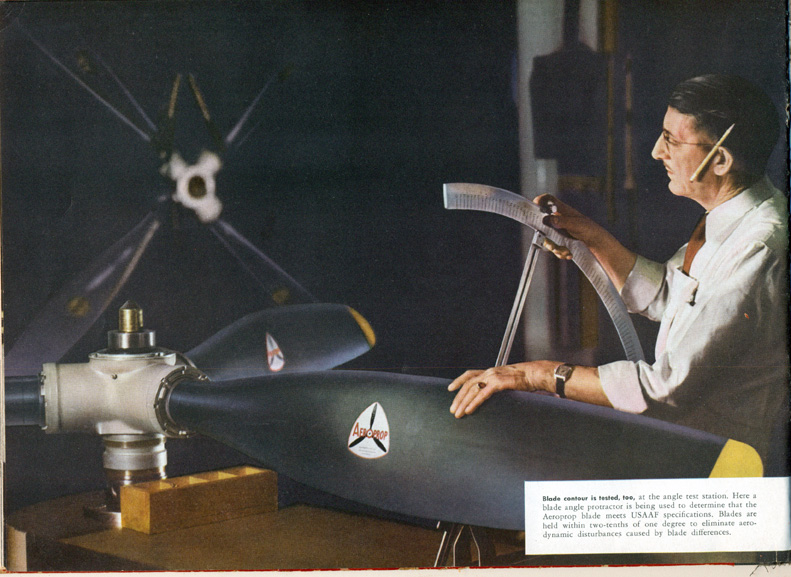
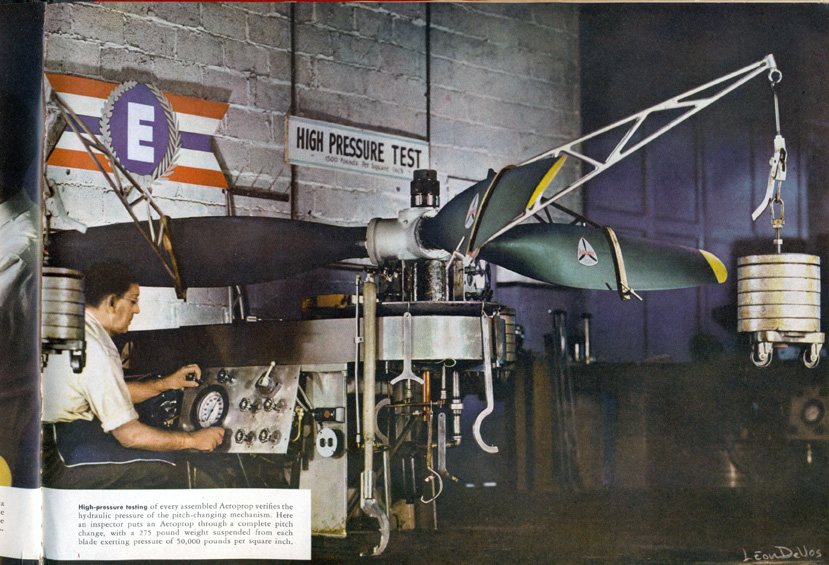
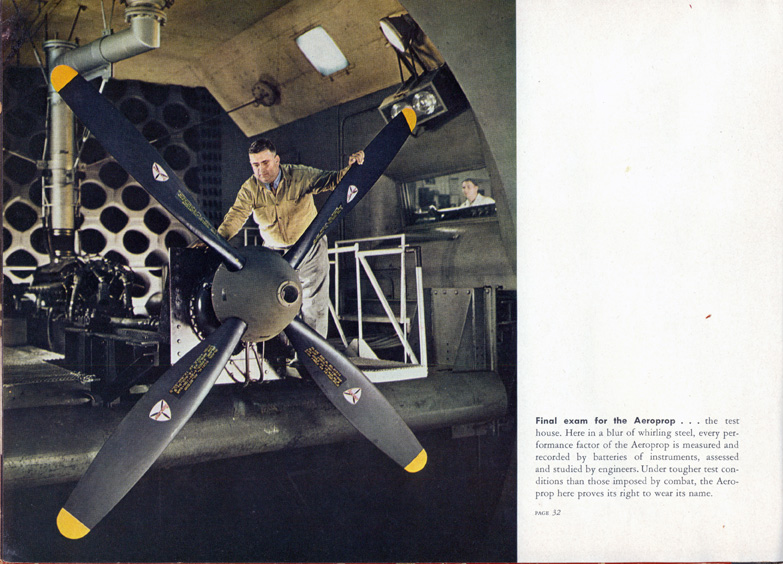
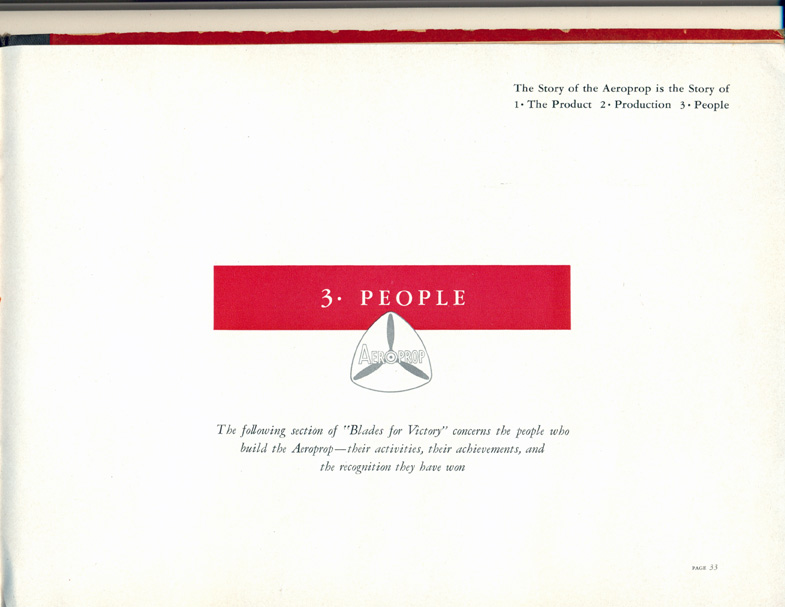
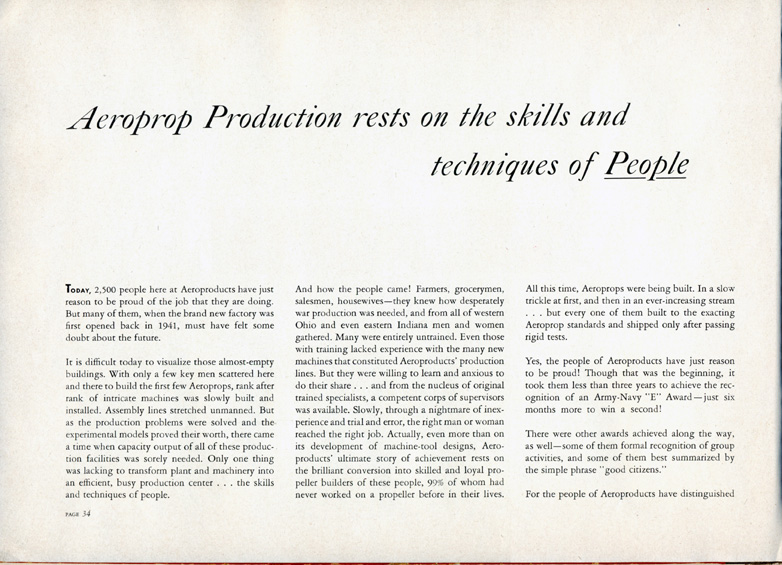
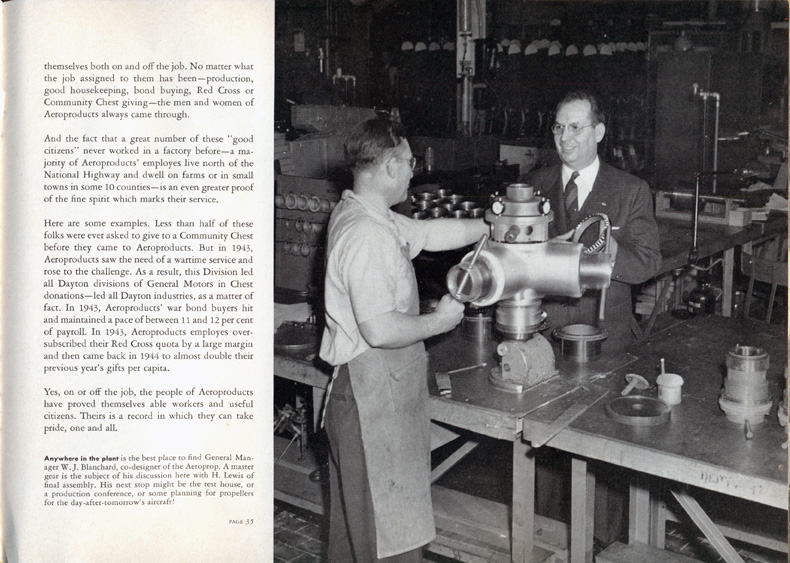
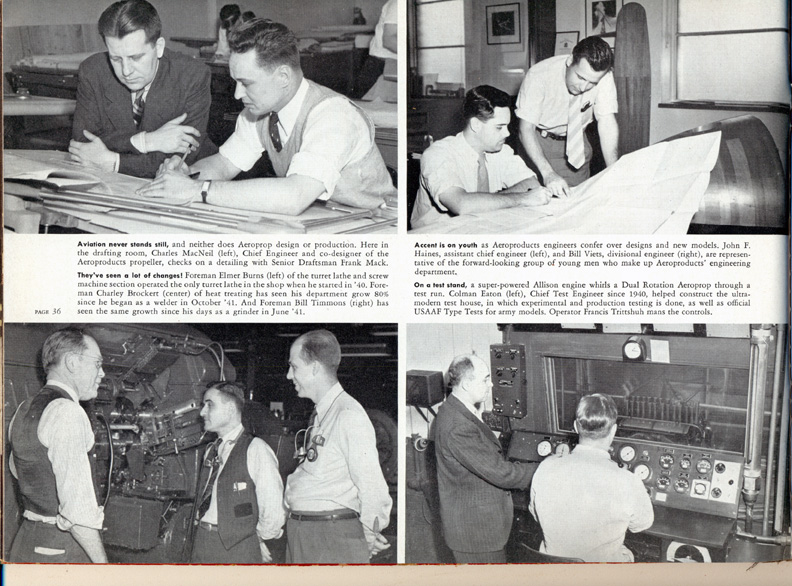
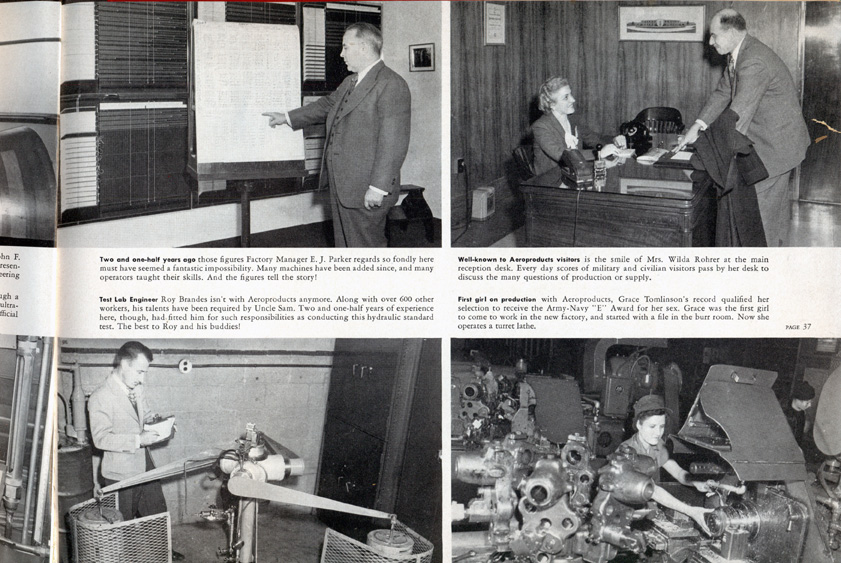
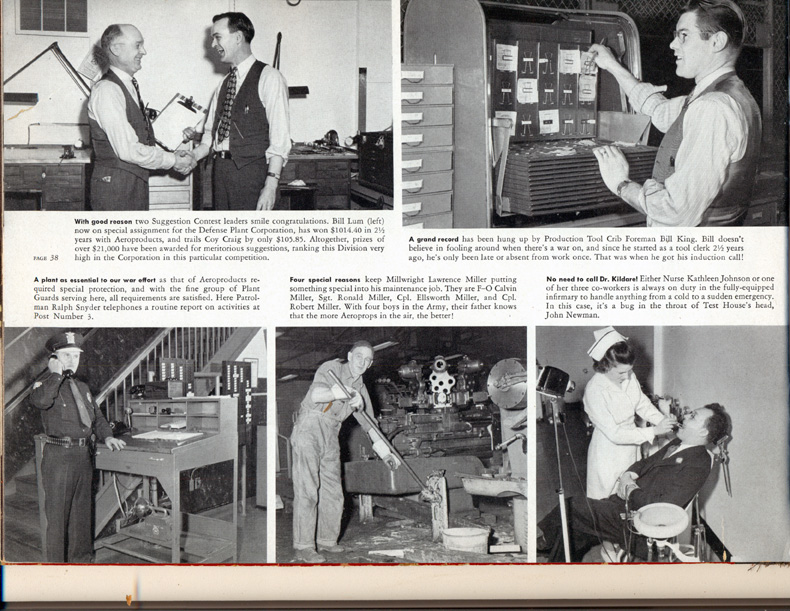
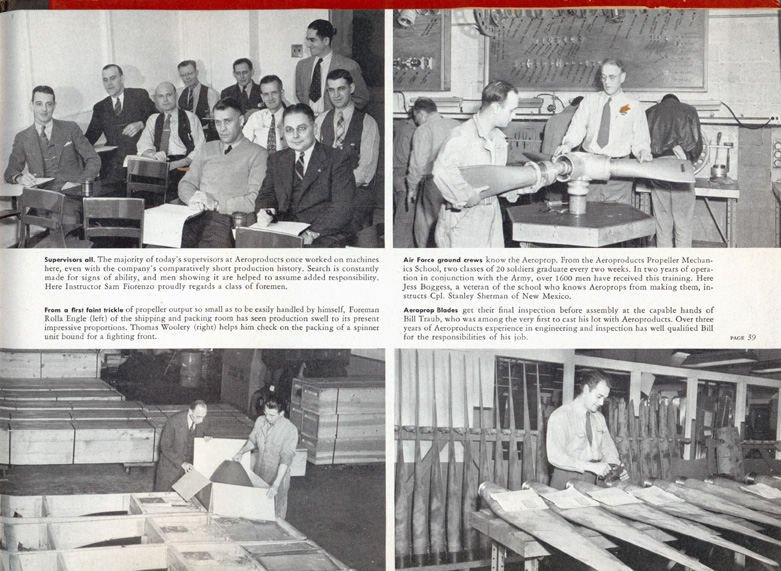
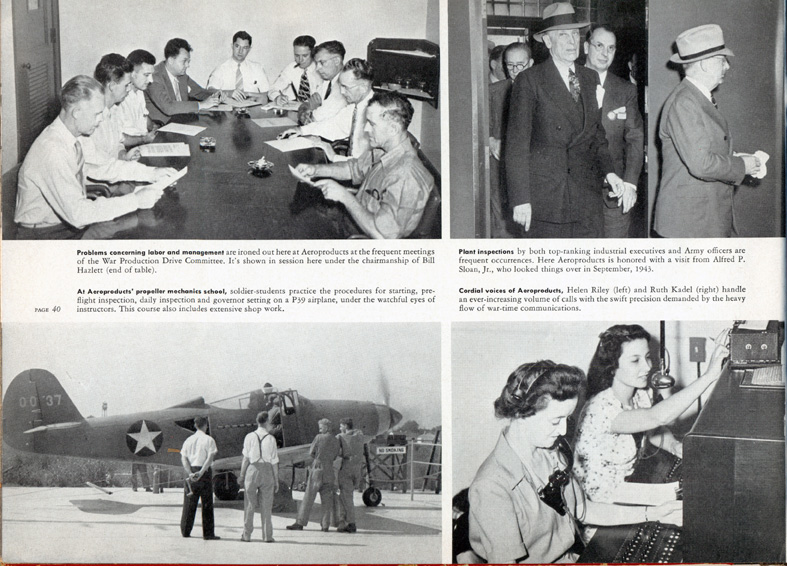
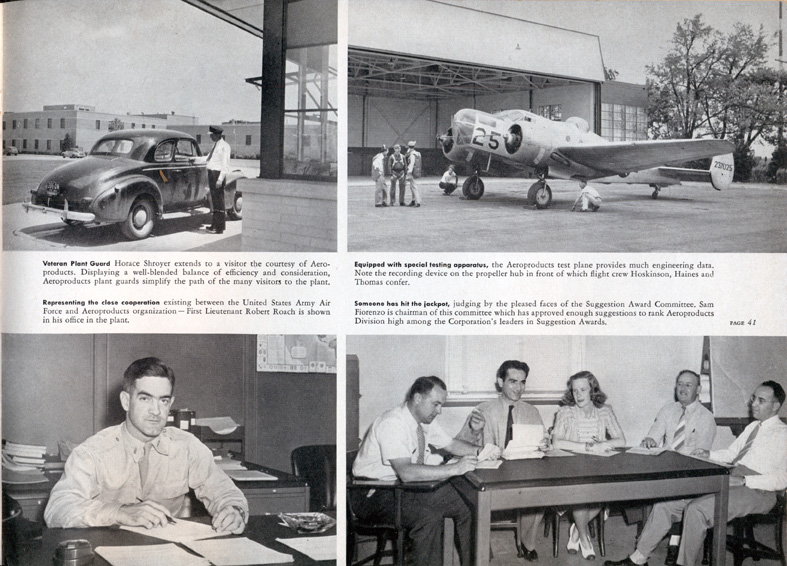
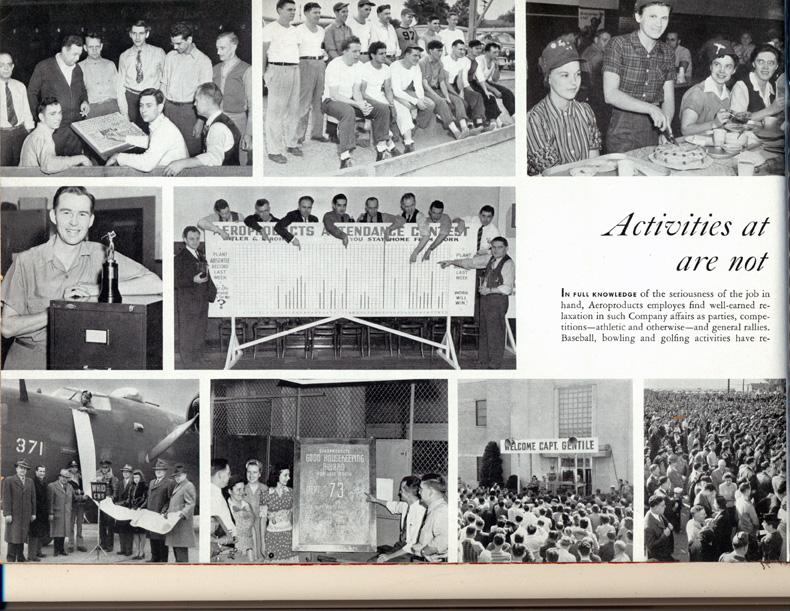
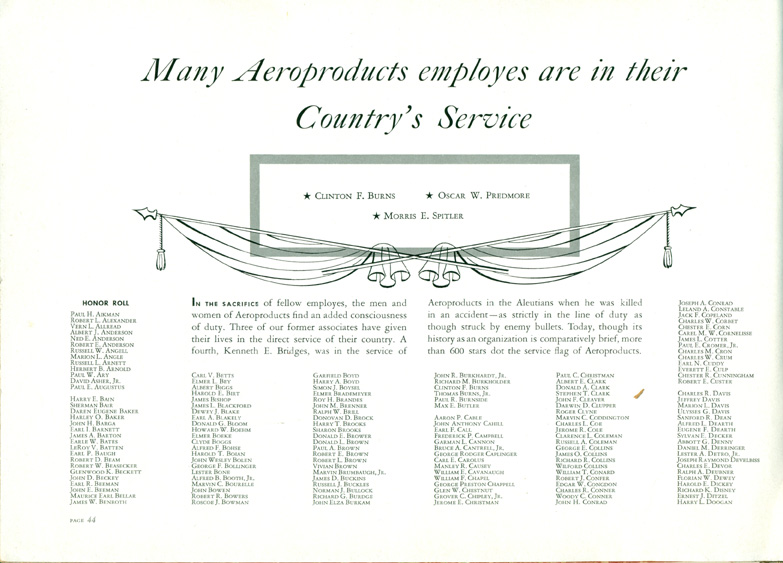
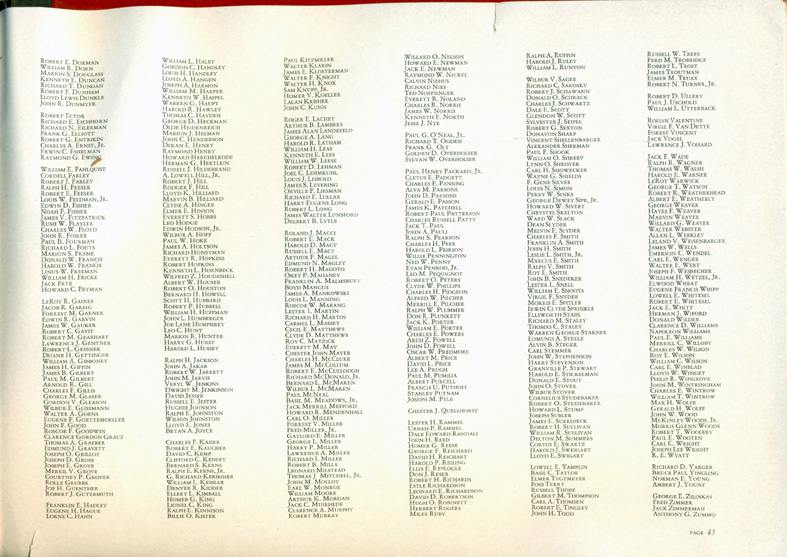
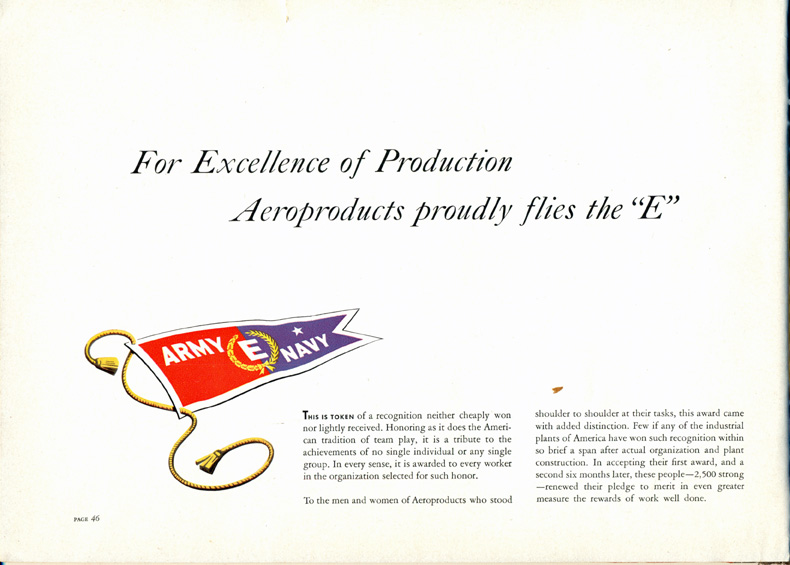
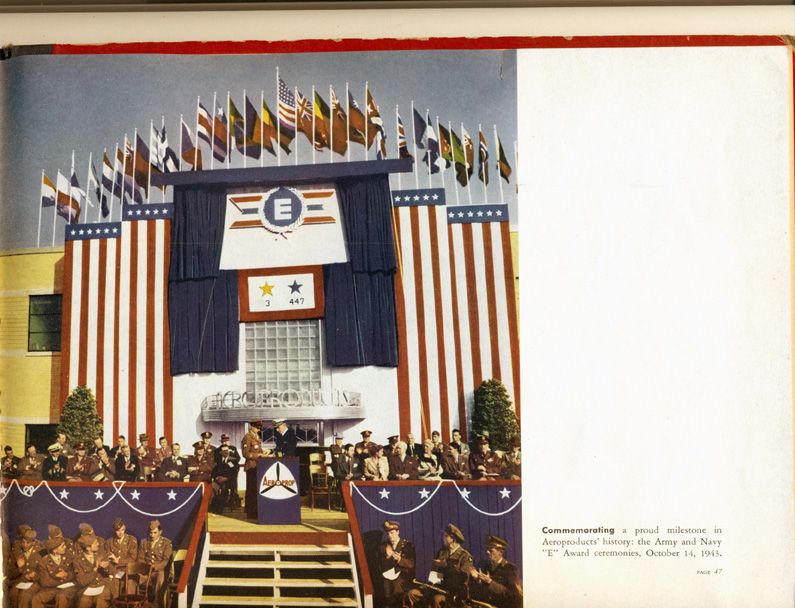
|



































































